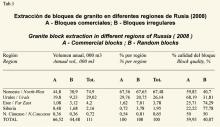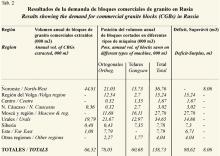Markets and Industry
10 trends in the Poland stone industry in 2012
1. There has been a slowdown in the number of private sector projects coming in the market in second half of the year. Many of these projects are now in state of stand-bye.
2. The Polish market for natural stone became even more price conscious as a result of a more difficult environment.
3. Increased price sensitivity meant that cheap Chinese stones were increasing their market share.
Granite industry of Rajasthan, India
India is well known all over the world for its wide variety of granites, but the general impression is they are located in the south of the country. The north, especially the state of Rajasthan, is usually associated with marble, sandstone and slates. Few associate the state of Rajasthan with a granite industry. Yet, in an almost furtive manner, unknown to most of the stone industry people, a significant granite industry has been developing in the state in recent years. This relatively recent industry is not just processing materials extracted elsewhere.
The U.S. market today (2012)
 Jeffrey Matthews is a well known professional with 38 years of experience in the natural stone industry. An independent consultant he has managed more than 100 important architectural/construction support programs. He has been President of the Marble Institute of America. This interview was done on May 2012.
Jeffrey Matthews is a well known professional with 38 years of experience in the natural stone industry. An independent consultant he has managed more than 100 important architectural/construction support programs. He has been President of the Marble Institute of America. This interview was done on May 2012.
He can be contacted at stonetrade@bellsouth.net.
The stone industry in Norway
The stone industry in Sweden
Construction downturn hits Bulgaria´s stone firms
Paul Daniel
Compared with neighbours Turkey and Greece, Bulgaria´s dimension stone industry is small. Vratsa limestone however has remained popular for a long time. The growth of private enterprise since 1989 has seen imports grow, and the market further developed with accession to the EU in 2007. But the past 2 years have not been easy.
Granite block supply in Russia
The legal obstacles to be overcome before opening a natural stone quarry in Russia are explained. Investments will not be forthcoming without a resolution to these problems. Meanwhile the country´s stone processing factories have to rely to an increasing extent on imports. In this report*, I.O. Sinelnikov & O.B. Sinelnikov propose some practical solutions. (*This article was translated from the Russian original in Gorny Zhurnal 2009, No.3, and appears here by kind permission of the publishers and authors.)



